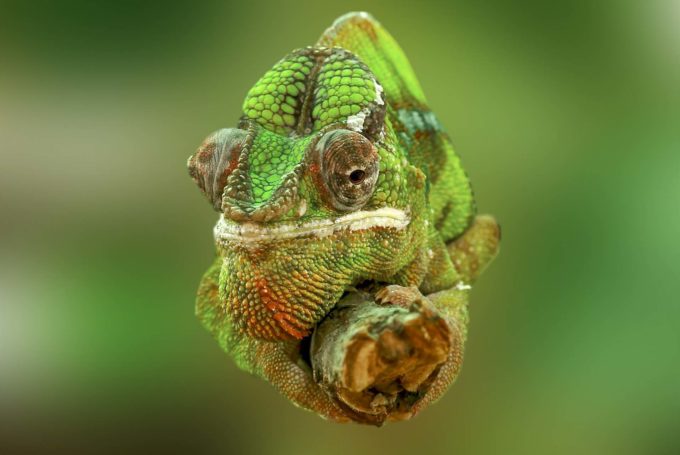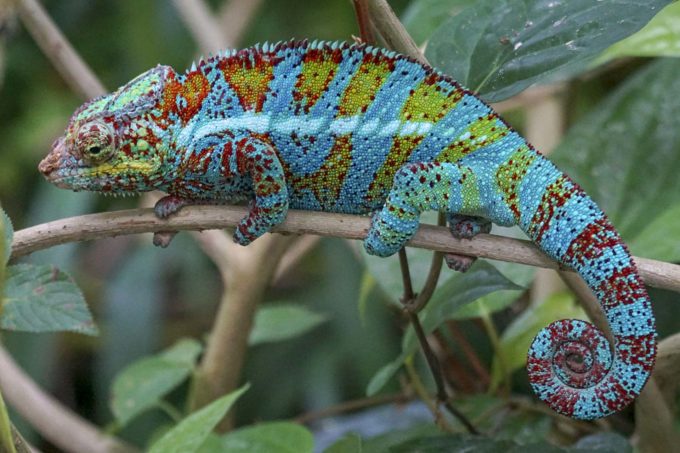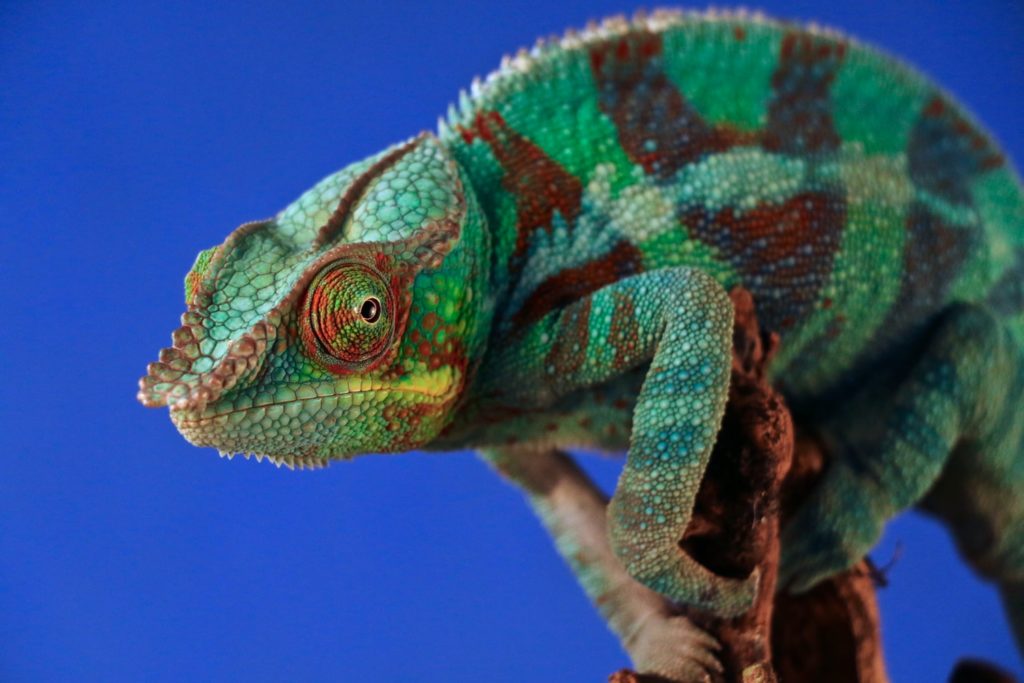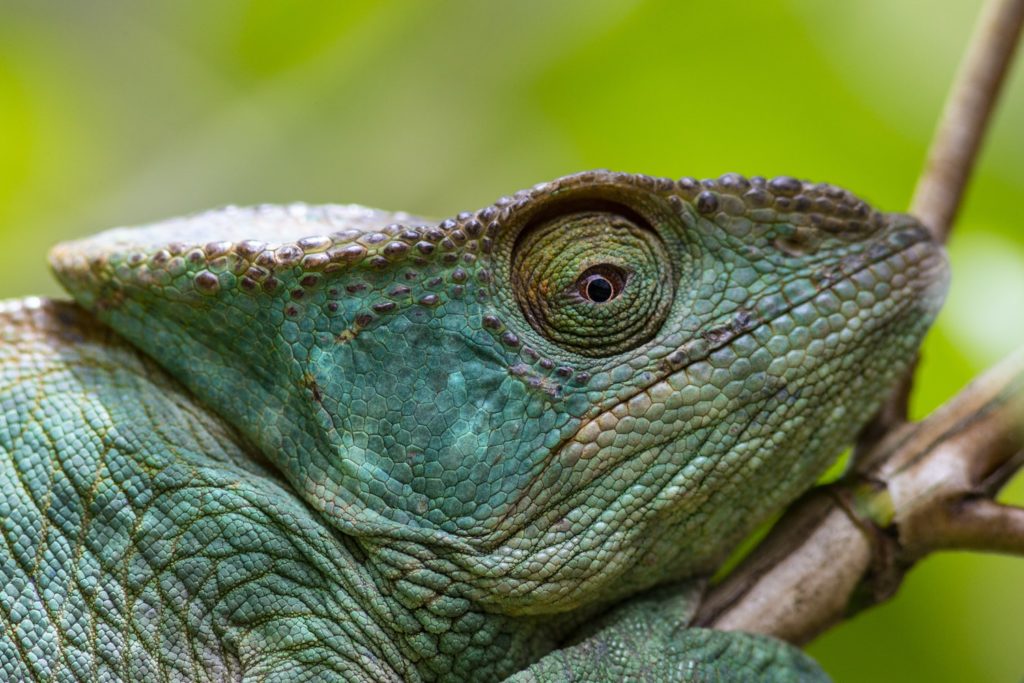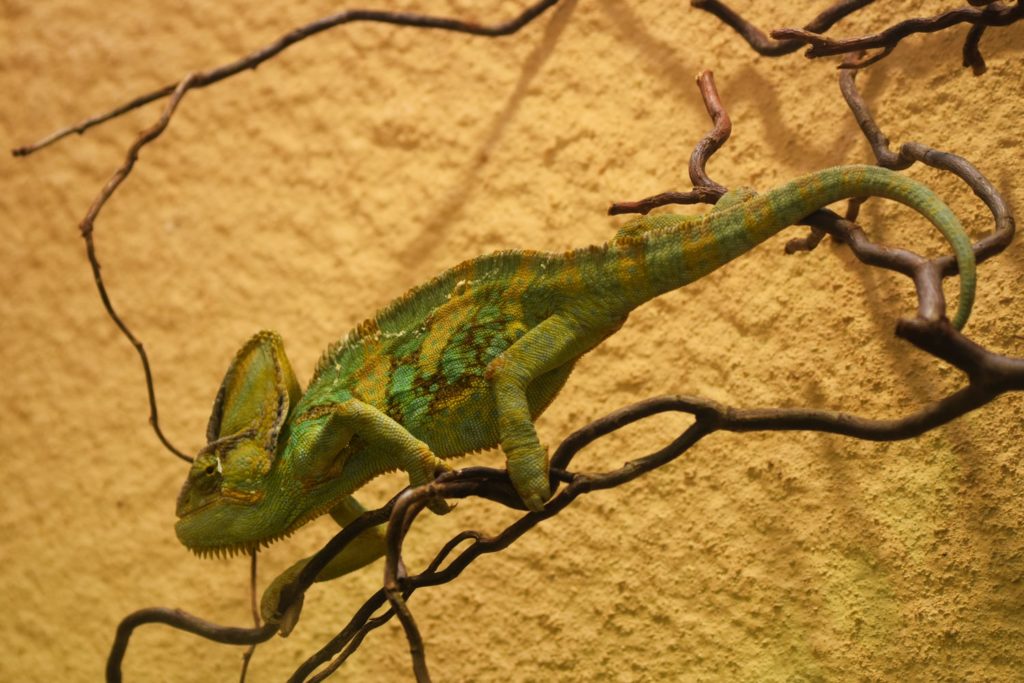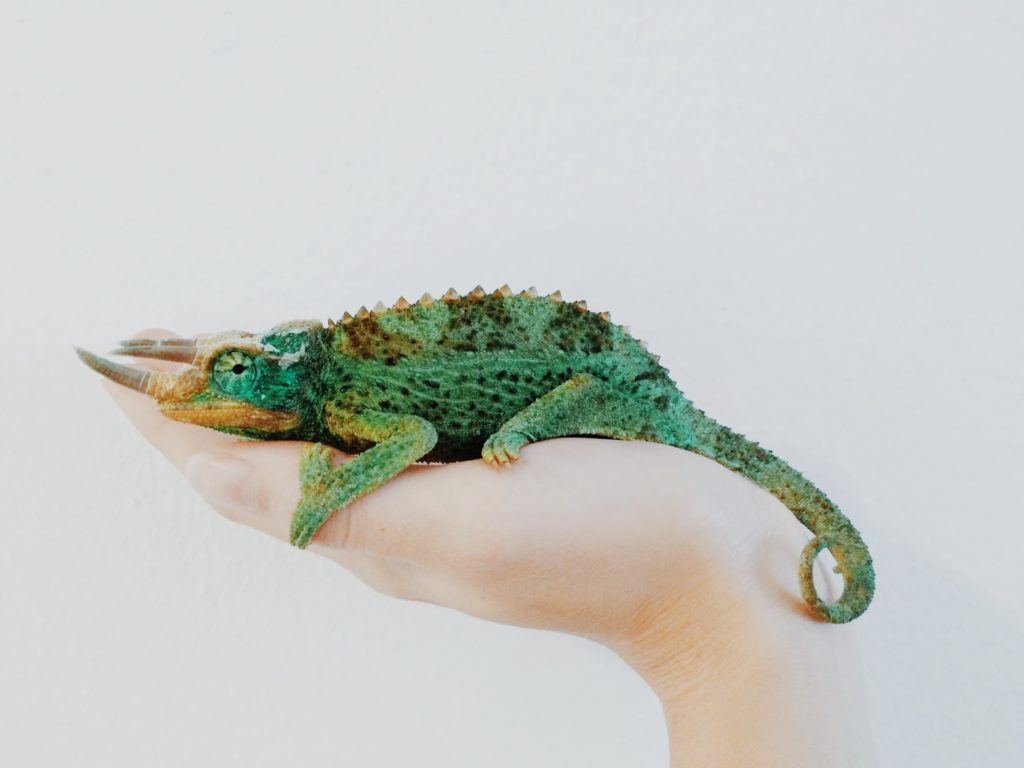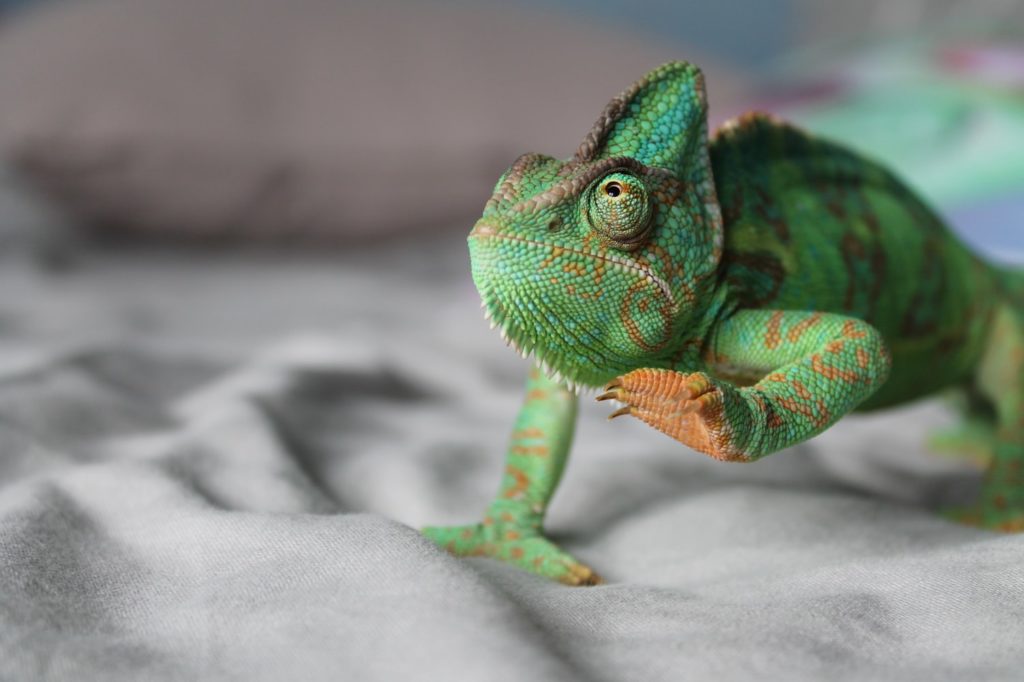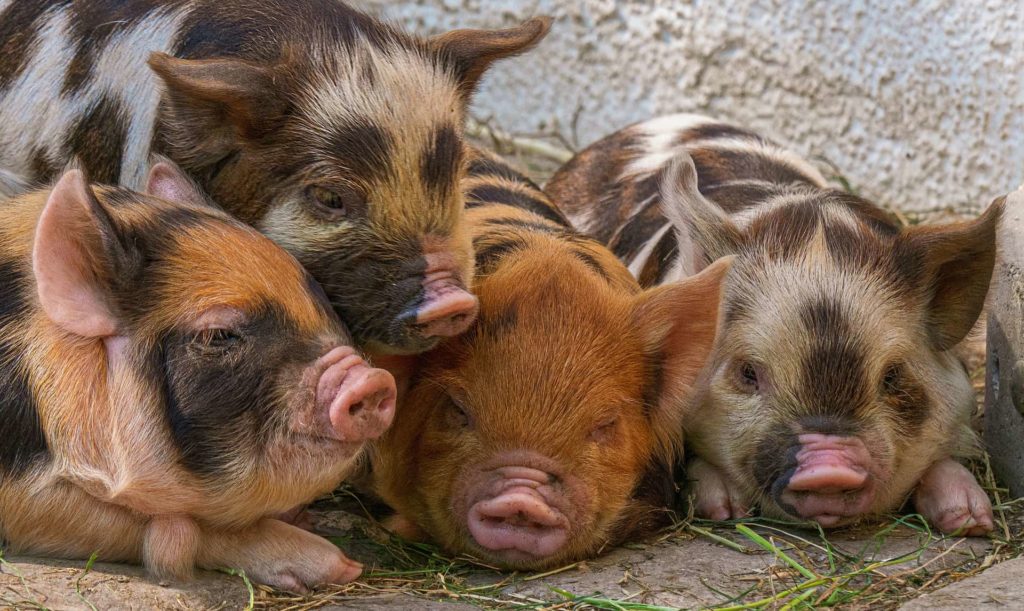Most species live in Africa and Madagascar. Few species are also found elsewhere – in southern Europe, the Middle East, India, and Hawaii, where it was introduced into the environment artificially. They live in tropical and humid forests, as well as desert and rocky areas. Many individuals lead an arboreal (spending life on the tree) lifestyle.
What do chameleons eat?
The main food is insects and spiders. Larger individuals feed on small birds and mice.
How does a chameleon change color?
Chameleons are known to change the color of their body. This skill helps the lizard to blend in with the environment and protect it from threats. Contrary to popular opinion, he does not adapt his body color to the environment, but to the current physical and emotional state. The color change is also used to communicate with other chameleons.
How does a chameleon hunt?
While hunting, it remains motionless in branches or leaves. When a potential victim comes close enough, he “throws” his long tongue at her, wrapping it around and swallowing her.
*Fun Facts about Chameleons*
- They appeared on Earth over 100 million years ago.
- When he feels a threat, he hides between branches, flattens his body, and becomes still.
- Some specimens have their skin covered with horns or spikes, giving the lizards a menacing appearance. They scare away potential intruders.
- The tongue of this animal is covered with sticky mucus. Its length is quite often greater than that of the chameleon itself.
- Chameleon trivia – can move your eyes in opposite directions in an instant.
- Most species lead a tree-living lifestyle. Chameleons are very well suited to this. Staying in trees is facilitated by a long and flexible tail and partially fused fingers.
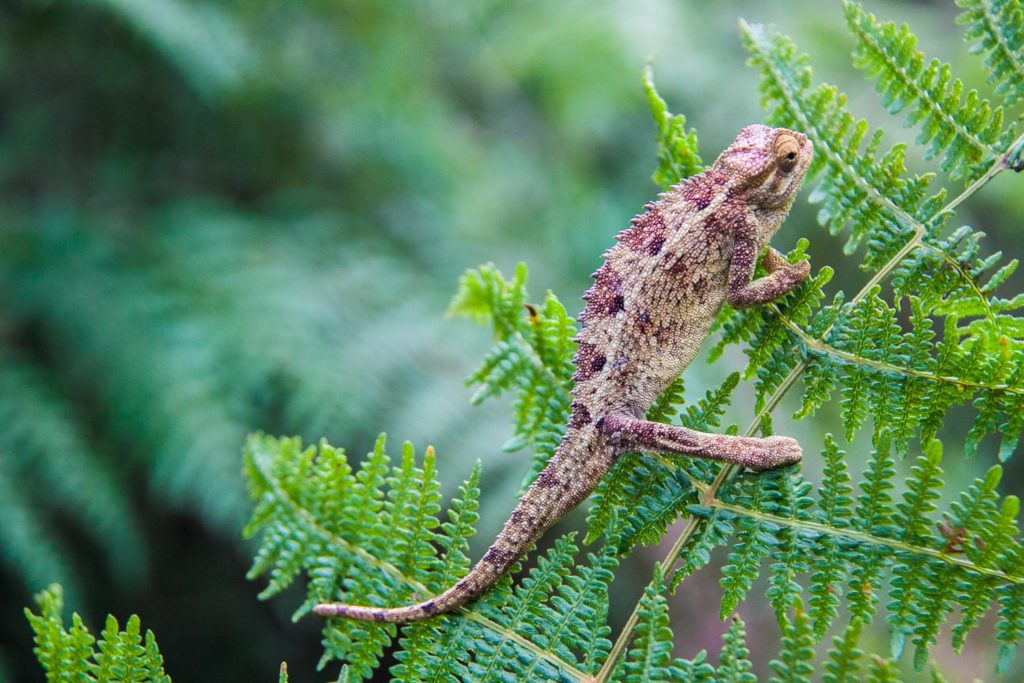
- The largest chameleons in the world are even up to 27 inches long.
- In 2007, the smallest species of chameleon in the world was discovered in Madagascar. The largest specimens of Brookesia micra are up to 23.6 mm long.
- The largest chameleons weigh about 2lb.
- When he senses a threat, he takes a deep breath. Then he inflates his body and seems more dangerous than it really is.
- When he is irritated, his body darkens, and in case of danger, light colors appear.
- During hunting, his tongue moves at a speed of 5 m / s.
- Chameleons can move their eyes in two directions simultaneously.
- This lizard’s saliva is 400 times more viscous than human saliva.
- Chameleons are endangered animals. If you buy this lizard, you must register the individual with the National Register at the Department of Environmental Protection and Agriculture.
- The name of this animal comes from the Greek word chamailéōn, which means a lion on earth.
- They live for about 5 years in the wild. They can live up to twice as much in the terrarium.
- The largest females lay nearly 100 eggs. Then they bury them in the sand. Depending on the species, the young hatch after about 4-12 months.
- a chameleon can change its color to one that suits its surroundings, this is not true. It is true that these unique reptiles can change color, but only because their mood and physical condition change.
- Chameleons have small but strong paws that allow them to stay on an obstacle and take a comfortable position for them.
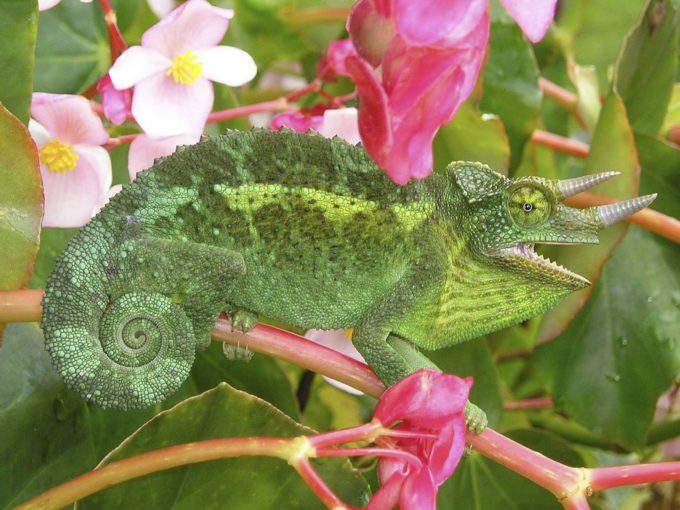
- The nails of these reptiles are long and sharp. Because they enable them to move quickly and agile.
- Chameleons are five-toed. The furnace of strong fingers allows them not only to move, but also to stay safely on the branch.
- The chameleon’s tail is long but extremely useful. They are mainly used to hold position. Chameleons can wrap a tail around an object.
- Although they have nothing to do with frogs, just as they use their tongue for hunting, several centimeters long.
- Reptiles are terribly slow. So, they use air in a life-threatening situation. They inflate their body when they feel threatened. This is to scare the enemy away.
- Chameleons are overly attached to the place where they are. It often happens that they defend their tree. To make them feel safe, they often hang head down, resembling leaves on a tree. This provides them with great camouflage.
- The chameleon is extremely sensitive to temperature. At low temperatures, about 10 cm, his skin turns gray. When it is warm enough, its color is intense.
- Food for reptiles varies. It depends on the species. Small animals eat spiders and insects, while larger species also feed on mice and small birds.
- The back of the chameleon is sharp and flat.
- The eyes of a reptile are independent of each other, so each eye can look in a different direction. Thanks to this skill, the chameleon can observe its surroundings without turning its head.
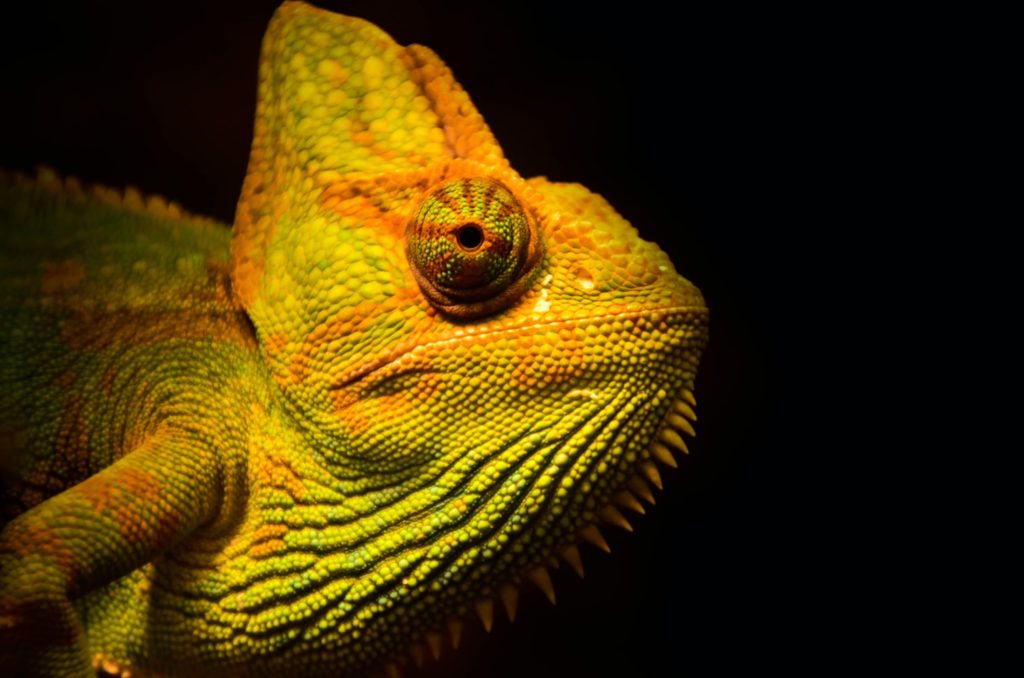
- The lizard’s tongue is rough and its tip sticky, making it more likely to get food.
- The length of a chameleon’s tongue is like its body length.
- The natural habitat of chameleons is Madagascar and Africa.
- The pink panther is among the most intriguing chameleons. The name, of course, comes from the color of the reptile.
- Chameleons, apart from insects and spiders, also eat fruit and vegetables.
- Lizard lifespan depends on temperature, terrarium conditions and food. They live the longest for about 12 years.
- Lizards bury their eggs and spend up to 12 months in the ground. The length of lodging depends on the species.
- Chameleons are very demanding creatures. For them to develop well, appropriate conditions must be provided. The terrarium for this reptile should have good ventilation, so it is best to opt for a mesh terrarium.
- Chameleons cannot hear. However, it reacts to vibrations that arise in their environment.
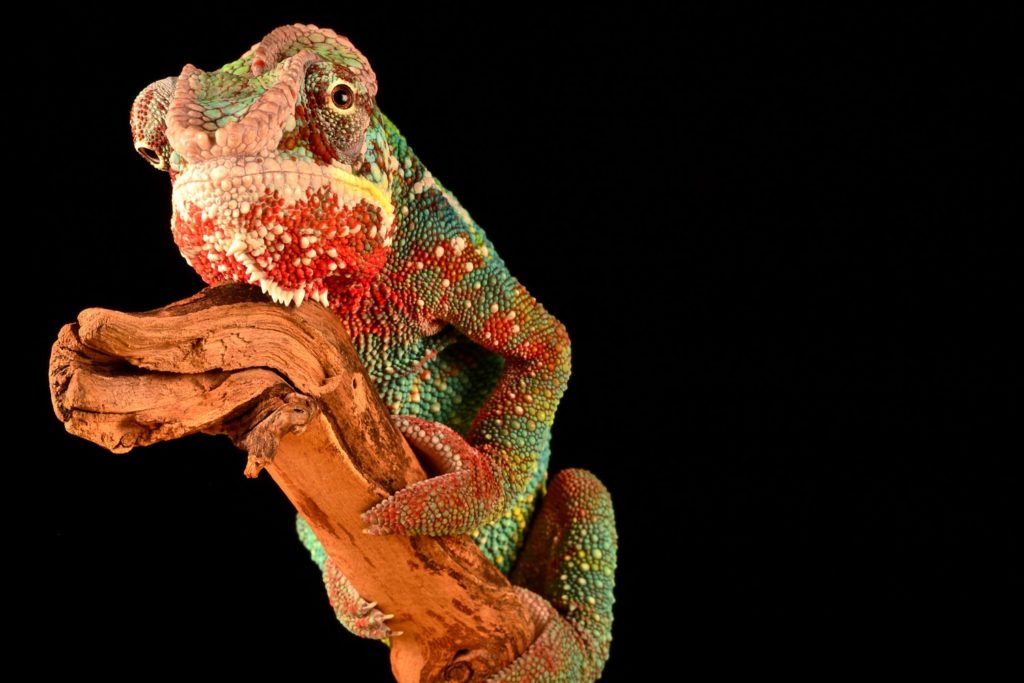
- Chameleons love heat. To maintain the right temperature, it is worth taking care of not only the lamp, but also the LED strip. You can wrap it around your favorite reptile branches. When putting them on, however, be careful not to get burned.
- Chameleons are great observers. They even love to observe the immediate surroundings from behind the window. However, remember to secure the place where your reptile is, so that it does not get hurt.
- When a chameleon becomes nervous, bright colors appear on its body.
- Lizards are difficult to get used to the owner. It often happens that despite many attempts, it is not possible to convince a pet at all. Therefore, you should not force the reptile to convince you, because it may be counterproductive, and severe stress may reduce appetite.
- A chameleon can become aggressive when it becomes attached to the environment in which it is kept. It can also happen that he attacks the rival.
- The chameleon does not become attached to their offspring. The young ones, right after they come into the world, are doomed to each other.
- Lizards hide well. Not only can they blend in with their surroundings, but they can also flatten the body to hide behind a branch or a leaf.
- Chameleons spend most of their time in the tree. This way, they avoid the threat of other predators.
- There are as many as 200 species of these lizards in the world.
- The chameleon’s tongue makes movement in just one second.
- Of the numerous species of chameleons, more than half are protected because of the likelihood of extinction.
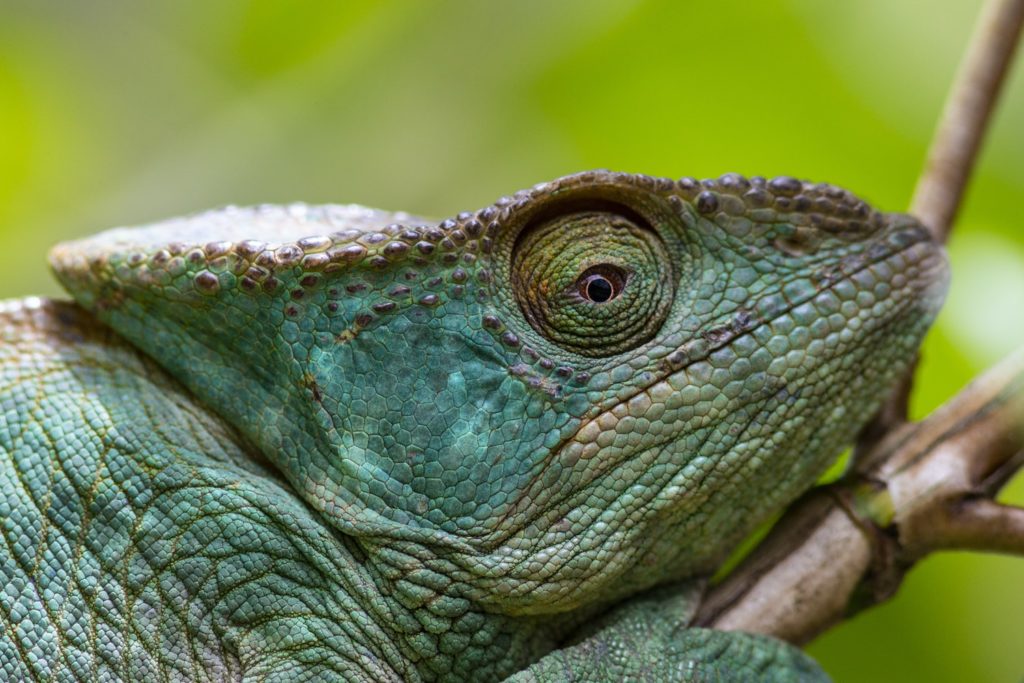
- Chameleons’ eyes are overgrown. However, they have a small opening for the pupils themselves.
- Chameleons are shy and secretive animals. They love to hide behind objects and plants around them.
- For the lizard to develop properly, it must be supplied with a large amount of calcium, which is necessary for its proper functioning.
- Unlike males, females can stay together in the same terrarium.
- Depending on the area of occurrence and living conditions, the chameleon comes in several different colors. The most common colors are green, brown, yellow, red, and blue.
- On the body of chameleons, we can see numerous spikes and horns. These unique body parts are designed to scare off intruders.
- The Yemeni chameleon has a characteristic helmet on its head.
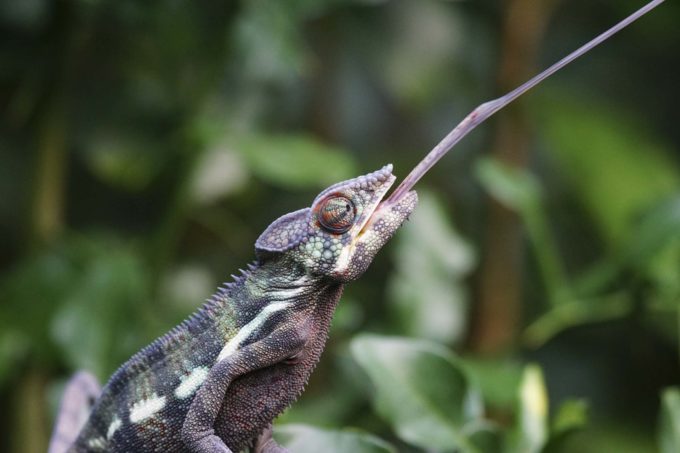
- Lizards usually defecate once a day at the same site.
- Female chameleons lay eggs for up to three days. It all depends on the conditions in which they are staying.
- A lizard’s pregnancy is approximately 4 weeks.
- When there is a fight between two chameleons, both specimens stand sideways. In this way, they signal irritation and a desire to fight.
- females of some species can fertilize themselves.
- Reptiles are not very fond of close contact with humans, so they should not be picked up too often.
- The reptile’s paws are extraordinarily strong and functional. Thanks to this, the pet perfectly climbs and moves from one element to another.
- Chameleons are bright animals. They love to observe the surroundings, which is why they love high places. In its natural environment, it often stays on the top of a tree.
- The panther chameleon is the most colored species of the 200 species of chameleon.
- Before mating, the male changes colors to encourage the female.
- The sex of chameleons is distinguished by the coloration characteristic of each species.
- An upset chameleon changes color. Characteristic dark spots appear on his body.
- When a chameleon has its mouth open for a long time, it may indicate that the ambient temperature is too high.
- On warmer days, it is worth exposing the chameleon to the sun’s rays. Vitamins will improve the condition of his skin.
- Chameleons are fragile animals that are frequently exposed to bodily harm. It is worth paying attention to whether there are no sharp objects in the place where the chameleon is.
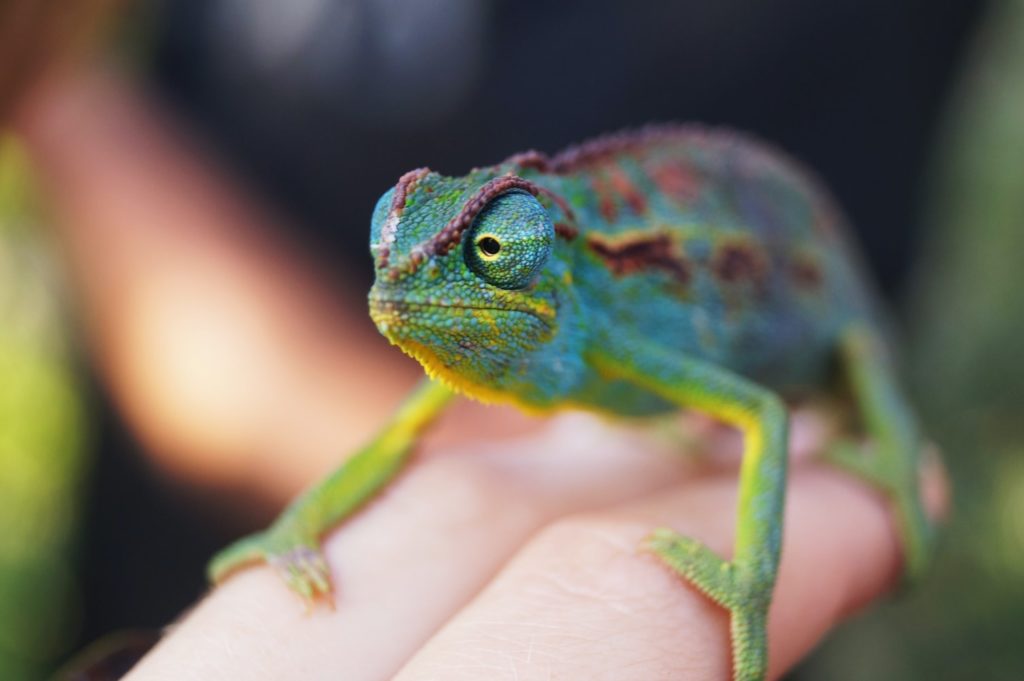
- Unlike other reptiles, chameleons do not possess poison and no venom teeth.
- Air-conditioned room may cause the lizard to dry out.
